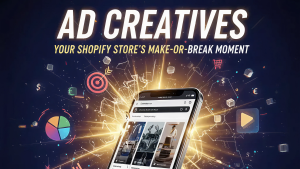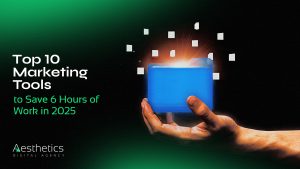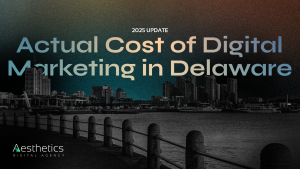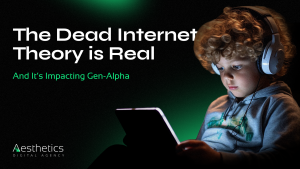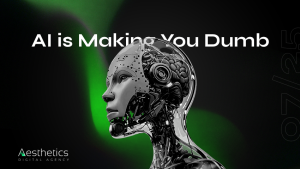As the online world keeps changing, web design trends are getting more creative, engaging, and focused on real people. In 2025, designers are all about making sites accessible, fun to use, and easy on the eyes, while tossing in some cool new tech.
Think AI that knows what you like or eco-friendly designs—these web design trends are shaking things up big time. Let’s check out the top 10 web design trends that are set to take over, explained just for you.
What Are the Latest Web Design Trends for 2025
1. Dark Mode
Dark mode has steadily gained popularity, offering a sleek, modern look while reducing eye strain and conserving battery life on OLED screens. In 2025, more websites will adopt dark mode as a standard feature, providing users with the option to switch between light and dark themes based on their preferences.
- Reduces Eye Strain: Dark mode lessens the impact of bright light, making it easier on the eyes, especially in low-light conditions.
- Enhances Visual Appeal: Many users find dark mode more aesthetically pleasing and modern compared to traditional light interfaces.
- Saves Battery Life: OLED and AMOLED screens consume less power when displaying dark colors, helping extend battery life for mobile users.
- Improves Focus: Darker backgrounds with high-contrast text help users concentrate better, reducing distractions.
2. Minimalism
Minimalism is a timeless design trend that will continue to dominate web design in 2025. Clean, uncluttered layouts with ample white space help improve focus and enhance user experience. Minimalistic designs also contribute to faster loading times, which can boost SEO rankings and reduce bounce rates.
- Faster Loading Times: With fewer elements on the page, minimalist websites load quickly, improving user experience and SEO.
- Better User Focus: A clean interface with only essential elements helps users navigate content easily without unnecessary distractions.
- Timeless Appeal: Minimalist designs age well and remain relevant for longer compared to overly complex layouts.
- Enhanced Mobile Experience: Simple designs adapt better to various screen sizes, making them more mobile-friendly.
3. Search Engine Optimization (SEO)-Driven Design
With search algorithms constantly evolving, web designers in 2025 will integrate SEO best practices directly into their design strategies. Sites will be optimized for core web vitals, including page speed, mobile responsiveness, and user engagement, ensuring higher visibility on search engines.
- Higher Search Rankings: Websites designed with SEO in mind will perform better in search engine results pages (SERPs).
- Improved User Experience: A well-optimized site is easier to navigate, faster to load, and more engaging for users.
- Increased Organic Traffic: SEO-friendly designs attract more visitors without relying heavily on paid advertising.
- Voice Search Optimization: With the rise of voice assistants, SEO-driven design will prioritize conversational keywords and structured content.
4. Micro Interactions
Micro interactions are small, subtle animations or design elements that respond to user actions, making interactions more intuitive and enjoyable. Whether it’s a button that changes color on hover or a loading animation, these tiny details enhance user engagement without overwhelming the interface.
- Improves User Experience: Small animations create a sense of responsiveness, making interactions more enjoyable.
- Provides Instant Feedback: Users receive real-time responses when they perform actions like clicking a button or submitting a form.
- Encourages Exploration: Interactive elements can subtly guide users to engage more with the website.
- Enhances Brand Personality: Unique micro interactions can make a website feel more human and engaging.
5. AI Chatbots
AI-powered chatbots are becoming more advanced, providing instant, personalized assistance to website visitors. In 2025, these bots will leverage natural language processing (NLP) and machine learning to offer seamless customer support, reducing response times and improving user satisfaction.
- 24/7 Customer Support: AI chatbots provide round-the-clock assistance, improving user experience and accessibility.
- Personalized Recommendations: Bots analyze user behavior and preferences to offer relevant suggestions.
- Cost-Effective: Businesses can reduce customer service costs by automating common queries.
- Faster Response Times: AI chatbots provide instant answers, improving engagement and conversion rates.
6. Accessibility
As the demand for inclusivity grows, web designers will prioritize accessibility to ensure that websites cater to users of all abilities. Compliance with WCAG (Web Content Accessibility Guidelines) will become a standard practice, making the web a more equitable space.
- Broadens Audience Reach: Accessible websites can be used by people with disabilities, increasing user base and inclusivity.
- Legal Compliance: Following accessibility guidelines helps businesses avoid potential legal issues.
- Improves SEO: Search engines prioritize accessible websites, boosting their rankings.
- Enhances Usability: Features like voice commands and keyboard navigation improve usability for all users.
7. Parallax Scrolling
Parallax scrolling creates a 3D effect as users scroll down a webpage, enhancing storytelling and engagement. This technique will continue to be popular in 2025, especially for websites that focus on immersive experiences.
- Creates Depth and Realism: The illusion of movement and layers enhances visual appeal.
- Improves Storytelling: Engaging animations can help guide users through content in a compelling way.
- Encourages Longer Engagement: Interactive elements keep users on the site for longer periods.
- Differentiates Brands: Unique scrolling effects can help a website stand out from competitors.
8. Sustainable Design
As the world shifts towards sustainability, web designers are also considering their digital carbon footprint. Sustainable web design focuses on optimizing site performance to reduce energy consumption, ensuring that websites are not only user-friendly but also environmentally responsible.
- Reduces Digital Carbon Footprint: Optimized sites consume less energy, making the internet more sustainable.
- Faster Loading Speeds: Lightweight images and efficient coding improve website speed.
- Supports Green Hosting: Many businesses are opting for eco-friendly hosting solutions.
- Aligns with Consumer Values: Users are increasingly conscious of sustainability, favoring brands that prioritize eco-friendly practices.
9. 3D Elements
Three-dimensional elements are becoming increasingly popular, offering a more immersive experience for users. Whether it’s interactive product models, 3D illustrations, or floating UI elements, 3D design enhances visual appeal and engagement.
- Increases Engagement: Users are more likely to interact with 3D elements.
- Enhances Product Visualization: Ideal for eCommerce and real estate, where users can explore products from multiple angles.
- Adds a Modern Touch: Gives websites a futuristic and high-tech aesthetic.
- Encourages Interaction: Hover effects and dynamic 3D visuals encourage user engagement.
10. AI and Personalization
Artificial intelligence is revolutionizing web design by enabling hyper-personalized user experiences. In 2025, AI-driven design will analyze user behavior and preferences to deliver content, recommendations, and layouts tailored to individual users.
- Customized User Journeys: AI adapts content based on browsing habits, improving user experience.
- Higher Engagement Rates: Personalized recommendations encourage users to spend more time on a website.
- Better Conversion Rates: Tailored experiences lead to higher sales and sign-ups.
- AI-Powered A/B Testing: Smart algorithms test different versions of a website to optimize performance.
What Are the Latest Trends in Web Development That Will Shape the Future?
Web development is heading towards automation, efficiency, and interactivity. Here are some of the most significant trends shaping the future:
- Progressive Web Apps (PWAs): Offering app-like experiences within browsers.
- Voice Search Optimization: Enhancing accessibility and convenience for users.
- No-Code and Low-Code Development: Making web development accessible to non-technical users.
- Blockchain Technology: Ensuring secure and decentralized digital experiences.
- Motion UI: Enhancing user engagement with fluid animations and transitions.
Do You Think We Will Need Graphic Designers in the Future?
Yes, graphic designers will remain essential in the future. While AI tools can assist in creating visuals, human creativity and artistic judgment are irreplaceable. Graphic designers will continue to play a crucial role in branding, user interface design, and digital storytelling.
10 Amazing Graphic Design Trends to Watch in 2025
Graphic design is evolving alongside web development, with new trends emerging every year. Here are ten exciting graphic design trends to watch in 2025:
1. 3D and Immersive Design
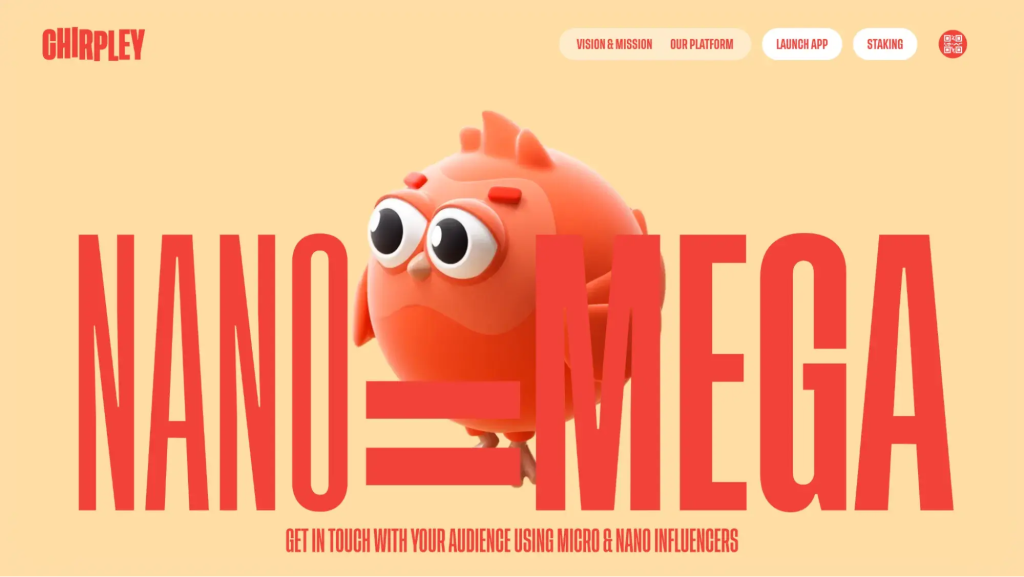
3D elements create a sense of depth and realism, providing a more interactive and engaging user experience in both digital and physical spaces.
2. Neon and Cyberpunk Aesthetics
Bold neon color palettes inspired by cyberpunk themes offer futuristic vibes, using bright and vibrant colors to create striking, high-energy designs.
3. Minimalist Illustrations

Simple, clean designs with minimal detail highlight modern aesthetics, focusing on functionality while maintaining a visually appealing, uncluttered look.
4. Hand-Drawn Elements
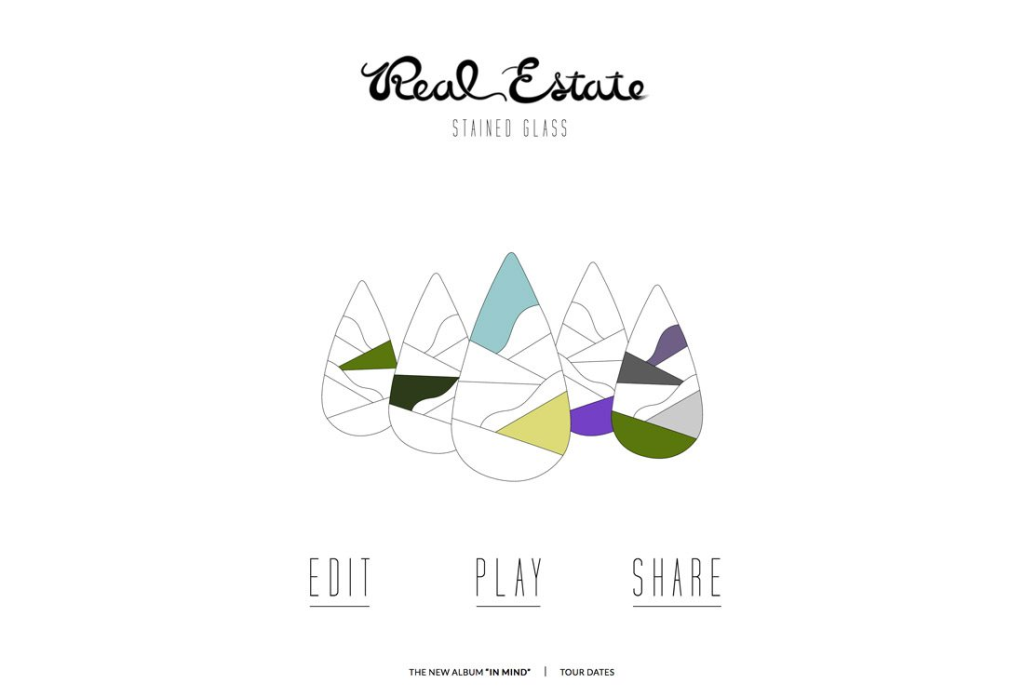
Authentic, personal illustrations that add a creative touch, blending artistic expressions with digital design for a more intimate, human feel.
5. Gradient Effects
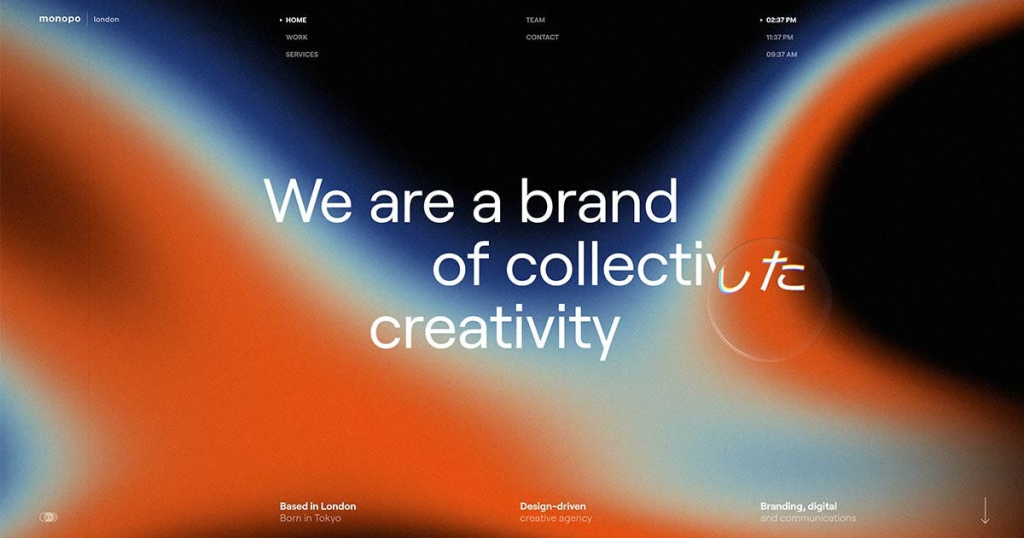
Smooth, colorful transitions between shades or hues, adding depth, dynamism, and a sense of movement that elevates a design’s visual impact.
6. Glassmorphism

UI elements that mimic frosted glass effects, giving interfaces a sleek, modern, and transparent look that enhances user experience through visual clarity.
7. Kinetic Typography

Animated text that moves or transforms in creative ways, enhancing storytelling by emphasizing key messages and adding emotional engagement.
8. Organic Shapes

Soft, flowing forms inspired by nature, providing designs with a relaxed, fluid aesthetic that contrasts with rigid geometric elements.
9. Claymorphism
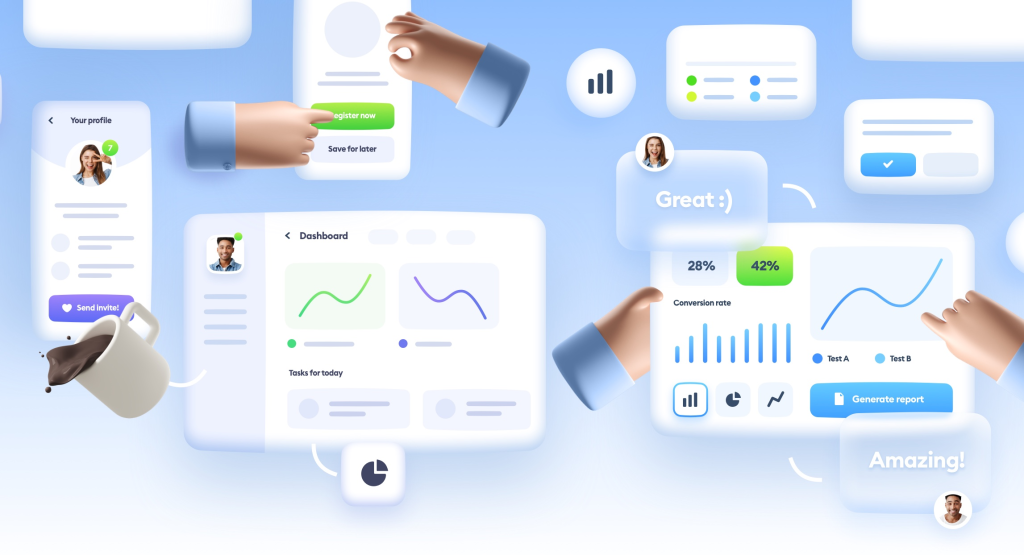
3D-like UI elements that feature soft, rounded forms, resembling clay, creating a tactile, comforting, and visually appealing interface design.
10. AI-Generated Art

Designs created using artificial intelligence, resulting in unique, innovative visuals that push creative boundaries and offer new ways of expression.
What Will Be the Future of Web Development in the Next Few Years?
The future of web development lies in automation, artificial intelligence, and seamless user experiences. As businesses continue to rely on digital platforms, the demand for high-performance, visually stunning, and user-friendly websites will only increase. Web developers will integrate smart solutions, minimalistic designs, and dynamic interactions to create immersive experiences.
Conclusion
The future of web design isn’t just about looking good but it’s about building a better, more meaningful experience for everyone. In 2025, the game has changed. We’re moving beyond static pages to create websites that are truly engaging, accessible to all, and even sustainable for the planet.
Ready to bring your website into the future with these 2025 web design trends? Stay ahead of the game and deliver amazing digital experiences—get web design by Aesthetics Digital today! Also, check out Aesthetics Digital LLC’s rating on DesignRush, the industry-leading B2B marketplace connecting brands with agencies.


